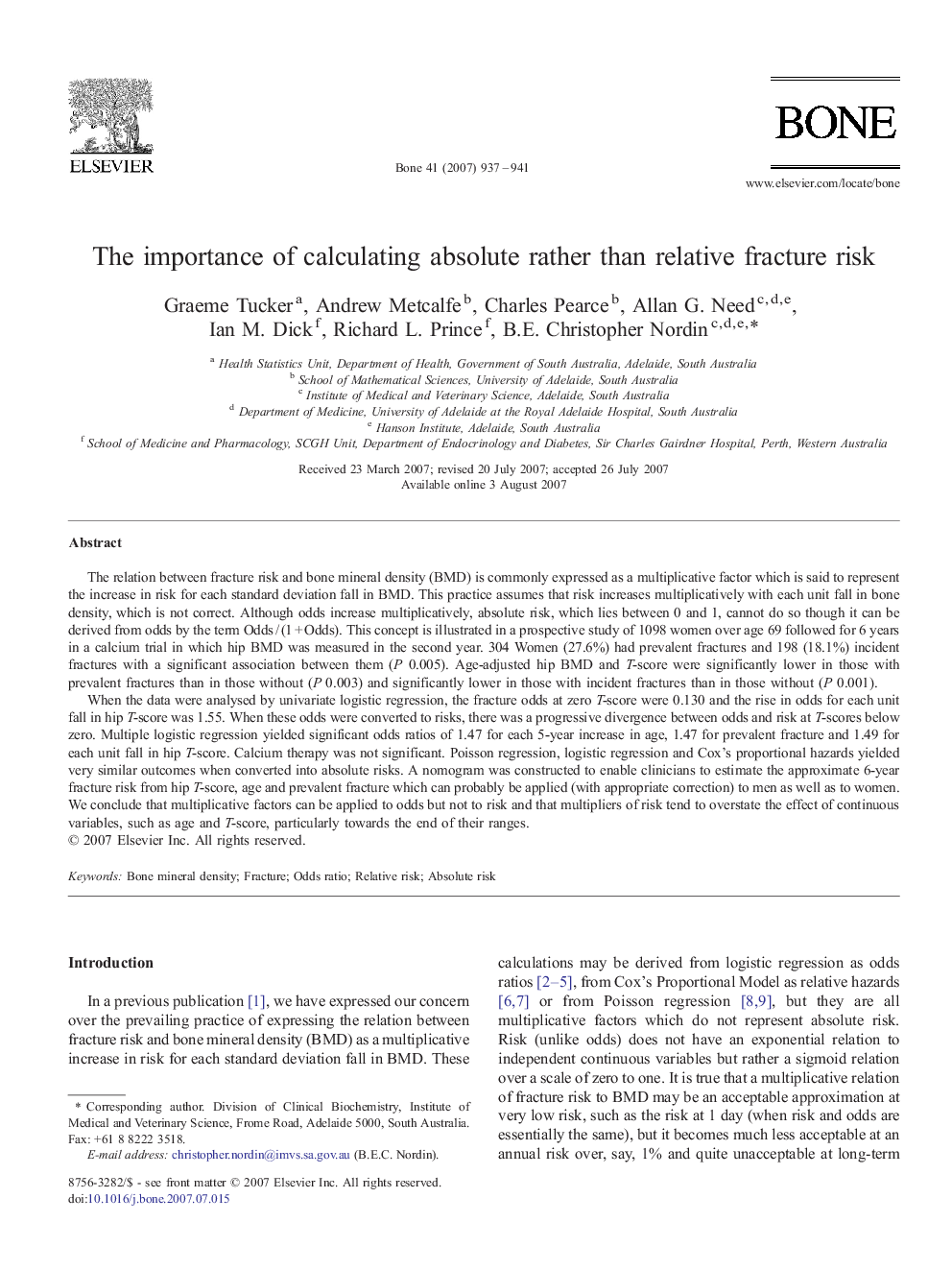| کد مقاله | کد نشریه | سال انتشار | مقاله انگلیسی | نسخه تمام متن |
|---|---|---|---|---|
| 2782814 | 1153360 | 2007 | 5 صفحه PDF | دانلود رایگان |

The relation between fracture risk and bone mineral density (BMD) is commonly expressed as a multiplicative factor which is said to represent the increase in risk for each standard deviation fall in BMD. This practice assumes that risk increases multiplicatively with each unit fall in bone density, which is not correct. Although odds increase multiplicatively, absolute risk, which lies between 0 and 1, cannot do so though it can be derived from odds by the term Odds / (1 + Odds). This concept is illustrated in a prospective study of 1098 women over age 69 followed for 6 years in a calcium trial in which hip BMD was measured in the second year. 304 Women (27.6%) had prevalent fractures and 198 (18.1%) incident fractures with a significant association between them (P 0.005). Age-adjusted hip BMD and T-score were significantly lower in those with prevalent fractures than in those without (P 0.003) and significantly lower in those with incident fractures than in those without (P 0.001).When the data were analysed by univariate logistic regression, the fracture odds at zero T-score were 0.130 and the rise in odds for each unit fall in hip T-score was 1.55. When these odds were converted to risks, there was a progressive divergence between odds and risk at T-scores below zero. Multiple logistic regression yielded significant odds ratios of 1.47 for each 5-year increase in age, 1.47 for prevalent fracture and 1.49 for each unit fall in hip T-score. Calcium therapy was not significant. Poisson regression, logistic regression and Cox's proportional hazards yielded very similar outcomes when converted into absolute risks. A nomogram was constructed to enable clinicians to estimate the approximate 6-year fracture risk from hip T-score, age and prevalent fracture which can probably be applied (with appropriate correction) to men as well as to women. We conclude that multiplicative factors can be applied to odds but not to risk and that multipliers of risk tend to overstate the effect of continuous variables, such as age and T-score, particularly towards the end of their ranges.
Journal: Bone - Volume 41, Issue 6, December 2007, Pages 937–941